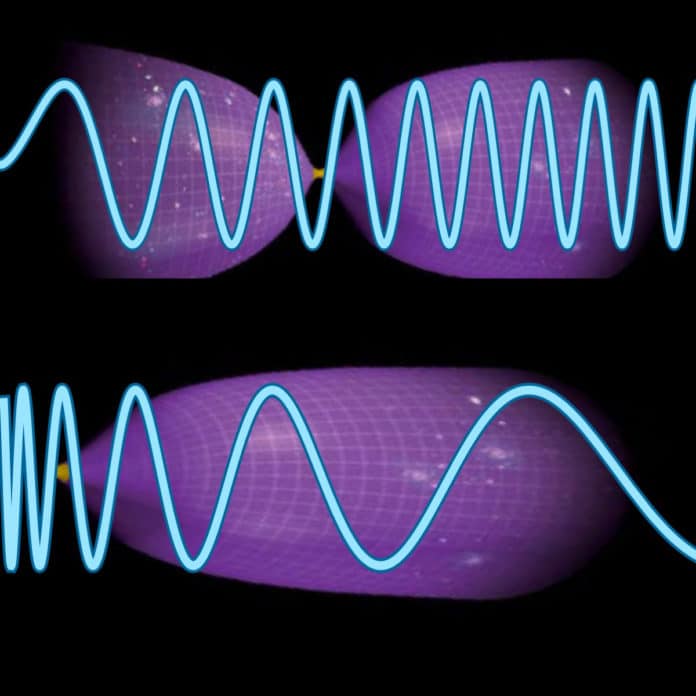The Big Bang hypothesis is a push to clarify what occurred at the very beginning of our universe. Revelations in astronomy and physics have appeared past a sensible doubt that our universe indeed has a beginning. Before that minute there was nothing; amid and after that minute there was something: our universe. The theory is a push to clarify what occurred amid and after that minute.
A group of researchers has proposed a ground-breaking new test for inflation, the theory that the universe drastically extended in size in a brief division of a second just after the Big Bang. They will likely give knowledge into a long-standing question- what was the universe like before the Big Bang?
Albeit cosmic inflation is well known for resolving some critical secrets about the structure and advancement of the universe, other altogether different hypotheses can likewise clarify these riddles. In a portion of these hypotheses, the condition of the universe preceding the Big Bang – the alleged primordial universe – was contracting as opposed to extending, and the Big Bang was in this manner a piece of a Big Bounce.
To identify between inflation and other ideas, the issue of falsifiability has inevitably arisen. What’s more, some of the scientists have also been curious about inflation- suggesting that its seemingly endless adaptability makes it all but impossible to properly test.
Avi Loeb of the Center for Astrophysics | Harvard & Smithsonian (CfA) in Cambridge, Mass. said, “Falsifiability should be a hallmark of any scientific theory. The current situation for inflation is that it’s such a flexible idea, it cannot be falsified experimentally. No matter what value people measure for some observable attribute, there are always some models of inflation that can explain it.”
Now, a group of scientists led by the CfA’s Xingang Chen, along with Loeb, and Zhong-Zhi Xianyu of the Physics Department of Harvard University has put in an idea of the primordial standard clock” to the non-inflationary theories. They also have devised a method that they expecting to for falsifying inflation experimentally.
Scientists started their experiment by identifying the defining property of the various theories – the evolution of the size of the primordial universe. Through this, they actually wanted to find some characteristic that can separate inflation from other theories.
Xianyu said, “For example, during inflation, the size of the universe grows exponentially. In some alternative theories, the size of the universe contracts. Some do it very slowly, while others do it very fast. The attributes people have proposed so far to measure usually have trouble distinguishing between the different theories because they are not directly related to the evolution of the size of the primordial universe. So, we wanted to find what the observable attributes are that can be directly linked to that defining property.”
The signs created by the primordial standard clock can fill such a need. That clock is any sort of overwhelming rudimentary molecule in the primordial universe. Such particles should exist in any hypothesis and their positions ought to waver at some standard frequency, much like the ticking of a clock’s pendulum.
The primordial universe was not entirely uniform. There were tiny irregularities in density on minuscule scales that became the seeds of the large-scale structure observed in today’s universe. This is the primary source of information physicists rely on to learn about what happened before the Big Bang.
The ticks of the standard clock generated signals that were imprinted into the structure of those irregularities. Standard clocks in different theories of the primordial universe predict different patterns of signals because the evolutionary histories of the universe are different.
Chen explained, “If we imagine all of the information we learned so far about what happened before the Big Bang is in a roll of film frames, then the standard clock tells us how these frames should be played. Without any clock information, we don’t know if the film should be played forward or backward, fast or slow, just like we are not sure if the primordial universe was inflating or contracting, and how fast it did so. This is where the problem lies. The standard clock put timestamps on each of these frames when the film was shot before the Big Bang and tells us how to play the film.”
Scientists then quantified ow these standard clock signals should look in non-inflationary theories, and suggested how they should be searched for in astrophysical observations.
Xianyu said, “If a pattern of signals representing a contracting universe were found, it would falsify the entire inflationary theory.”
The success of this idea lies in experimentation. “These signals will be very subtle to detect,” Chen said, “and so we may have to search in many different places. The cosmic microwave background radiation is one such place, and the distribution of galaxies is another. We have already started to search for these signals and there are some interesting candidates already, but we need more data.”
Many future galaxy surveys, such as US-lead LSST, European’s Euclid and the newly approved project by NASA, SphereX, are expected to provide high-quality data that can be used toward the goal.
The study will appear in Physical Review Letters as an Editors’ Suggestion.
The preprint of this paper is available in https://arxiv.org/abs/1809.02603. Related previous work can be found in https://arxiv.org/abs/1509.03930.
